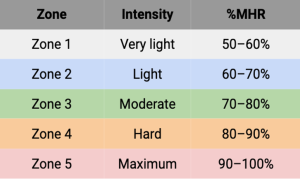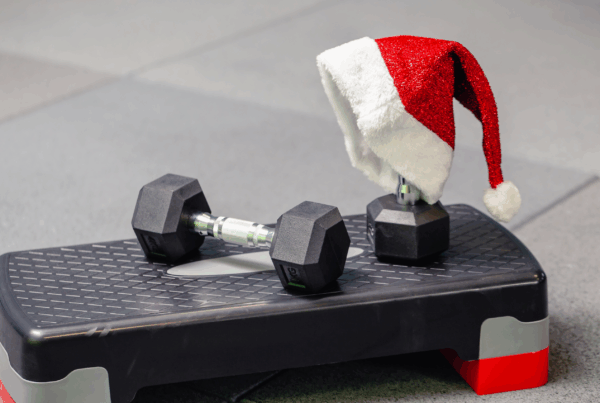Last week we (hopefully) convinced you to begin tracking your heart rate in order to get the most out of your workouts. But once you’ve got that data at your fingertips, what exactly should you do with it? Today the goal is to empower you with that information!
Intensity matters
To build on the “why’s” of heart rate tracking, from a broad perspective exercise programs are guided by what is known as the “FITT” principle. This principle dictates that four major factors must be considered when putting together a well balanced program.
-
- Frequency – how often you will train
- Intensity – how hard will each training session be
- Time – how long will each training session go for
- Type – what mode will you utilise (i.e. running, swimming)
A well-designed training program will include workouts with varying frequency, duration, and intensity spaced out tactically to allow for recovery. This means that some workouts should be short with higher intensity, some long and lower intensity; occasionally, even long and hard. It’s the variety and balance that makes for an effective program.
Without heart rate zones, intensity is very difficult to establish. By using heart rate zones in cardio sessions to dictate intensity, we can more effectively intertwine all four components of the FITT principle to balance work and recovery.
Working out your maximal heart rate
Perhaps one of the best things about heart rate zones is that they are individualised. Heart rate changes with age and therefore, so do our personalised zones.
The first step in establishing heart rate zones is to work out your maximum heart rate (MHR). Although this calculation will never be 100% accurate, it is a fantastic guide and has been used in research and clinical settings for years. The calculation is as simple as:
220 – [your age] E.g John is 46 years old. 220 – 46 gives him a MHR of 174bpm.
The five zones
Using maximal heart rate, we can work out percentages of maximal heart rate (%MHR). This is the language of heart rate zones! By calculating your percentage heart rates and putting them in the graph below, you have your zones! Some watches actually do this for you – and in that case, now you know how!
For example, a 70%MHR for John would be 70% his maximal heart rate (174) – i.e 122bpm.

Zone 1 – this zone will not stress the body much at all and is great for recovery days or preparing your body for future sessions in more intense zones. Zone 1 requires a mode where you can easily keep heart rate low, such as walking.
Zone 2 – in this zone, you should be able to maintain exercise for extended periods of time (60+ minutes). This zone is critical for building endurance / establishing a good base fitness and should be a part of every fitness routine!
Zone 3 – this is where lactic acid starts to build and things start to feel more difficult. Sessions of medium duration (e.g. 30-60 minutes with undulating intensities) in this zone will make moderate efforts feel easier overtime and improve your body’s efficiency during exercise.
Zone 4 – this is where things start to get tough! Unlike previous zones, you won’t be able to maintain zone 4 for very long. Interval training in zone 4 (1-4 minutes of work at a time) is great for building speed as well as your ability to quickly clear lactate and withstand tough bouts of activity.
Zone 5 – at zone 5, you’ve hit your peak! Your body is working at its maximal capacity and you will only be able to maintain this for a short period. Short, intense intervals (40 seconds max) in zone 5 with long rest are fantastic for advanced exercisers looking to reach peak performance.
Let’s get to work!
You wouldn’t accept half a paycheck – so why would you exercise and only reap half the rewards? Now that you are equipped with the knowledge of heart rate zones, we hope you don’t have to!
Do you have further questions about using heart rate zones? Drop a comment or even better, get in touch with an exercise physiologist. They will be sure to help you out.
Author: Tessa Nielsen
Clinical Exercise Physiologist and Content Creator at Specialised Health
#exercisephysiology #exerciserehab #rehabilitation #lifeinsurance #incomeprotection #ctp #workcover #mobile #mobileexercisephysiology #fatigue #mentalhealth #cancer #musculoskeletal #injury #pain #physio #physiotherapy #Sydney #Brisbane #Melbourne #Adelaide #Auckland #Waikato #BayofPlenty #Wellington #Otago #Christchurch



